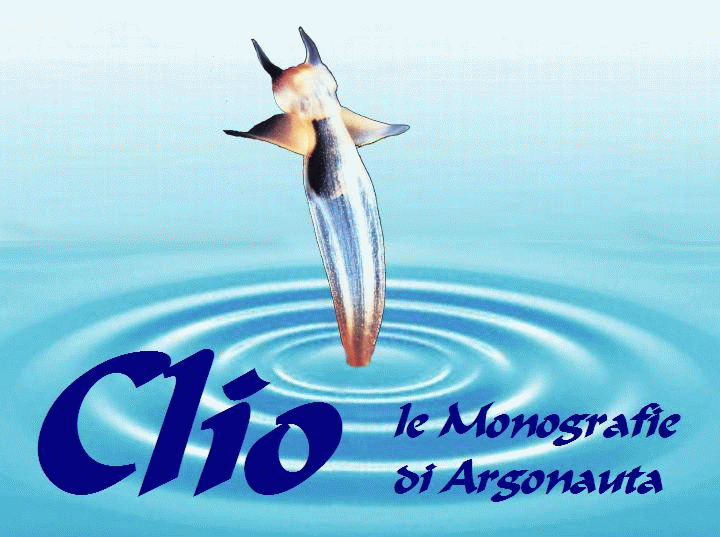
Clio supplemento a Argonauta n. 1-6 2012
 |
 |
Fig. 3 Locomozione degli esemplari giovani di Aporrhais - Locomotion of juvenile specimens of Aporrhais
|
Sono evidenziati gli spazi percorsi e le posizioni occupate dal piede nei vari movimenti effettuati: a) punto di partenza e posizione occupata; point of departure and position occupied; b) allungamento del piede in avanti; stretching forwards of the foot; c) trascinamento in avanti della conchiglia (spazio percorso). dragging forward of the shells (space covered) (by Perron, 1978) Un altro comportamento singolare degli Aporrhais viene manifestato quando si trovano di fronte ad un ostacolo che non puņ essere superato con il sistema di locomozione precedentemente descritto. E' chiaro che il mollusco aggira l'ostacolo rinunciando al suo superamento. Questo avviene con un cambiamento di direzione che č attuato con una torsione del piede sul suo asse medesimo. La torsione imprime alla conchiglia una rotazione in senso orizzontale di 360°gradi permettendo al mollusco, senza effettuare spostamenti, ma rimanendo sul posto, un cambiamento completo di direzione. Una volta che la conchiglia si č adagiata sul substrato, con la direzione di movimento completamente invertita, il piede abbandona lo stato di torsione per tornare a distendersi nuovamente. Al fine di dare un quadro completo sulla locomozione degli Aporrhais č necessario richiamare ancora la morfologia della conchiglia che indubbiamente svolge un ruolo complementare alla locomozione stessa. Gli Aporrhais raggiungono la loro maturitą, dal punto di vista conchiliare, solo in avanzata fase di accrescimento. Le appendici labiali svolgono un ruolo importante e fondamentale nella locomozione, ma queste sono presenti solo negli esemplari adulti. I giovani sono privi delle appendici, come nč č privo A. occidentalis ( Beck,1836) che, a differenza delle altre specie, nč č privo anche nella condizione di piena maturitą, avendo lo stesso sostituito alle appendici, un'unica appendice alare larga e continua. Ciņ nonostante, ai fini della locomozione, si comporta in modo identico alle altre specie. |
The space covered and the positions occupied by the foot during the various movements undertaken are shown: Further singuiar behaviour of the Aporrhais is shown' when they find themselves in front of an obstacle which cannot be surmounted with the above descrived system of Iocomotion. It is clear that the mollusc will go round the obstacle, therefore giving up surmounting it. This occurs with a change of direction, which is brought about by a twisting of the foot on its own axis. The twisting effects a rotation of the shell in a horizontai pIane of 360 degrees, allowing the mollusc, without moving, and staying in the same place, a complete change of direction. Once the shell is resting on the substratum, the direction of movement completely reversed , the foot untwists itself and returns to stretch out again. In order to give a complete picture of the locomotion of the Aporrhais, it is necessary to recall the morphology of the shell which undoubtedly carries out a complementary role in the actual locomotion. The Aporrhais reach maturity as far as the shell is concerned, only in an advanced stage of growth. The labial appendices carry out an important and fundamental role in locomotion, but these are only present in adult specimens. They are not present in juvenile specimens nor in A. occidentalis (Beck, 1836), which, unlike the other species, do not have them even in full maturity, having substituted the appendices with a continuous, wide wing appendix. Despite this, for the purposes of locomotion, it behaves the same way as the other species. |
